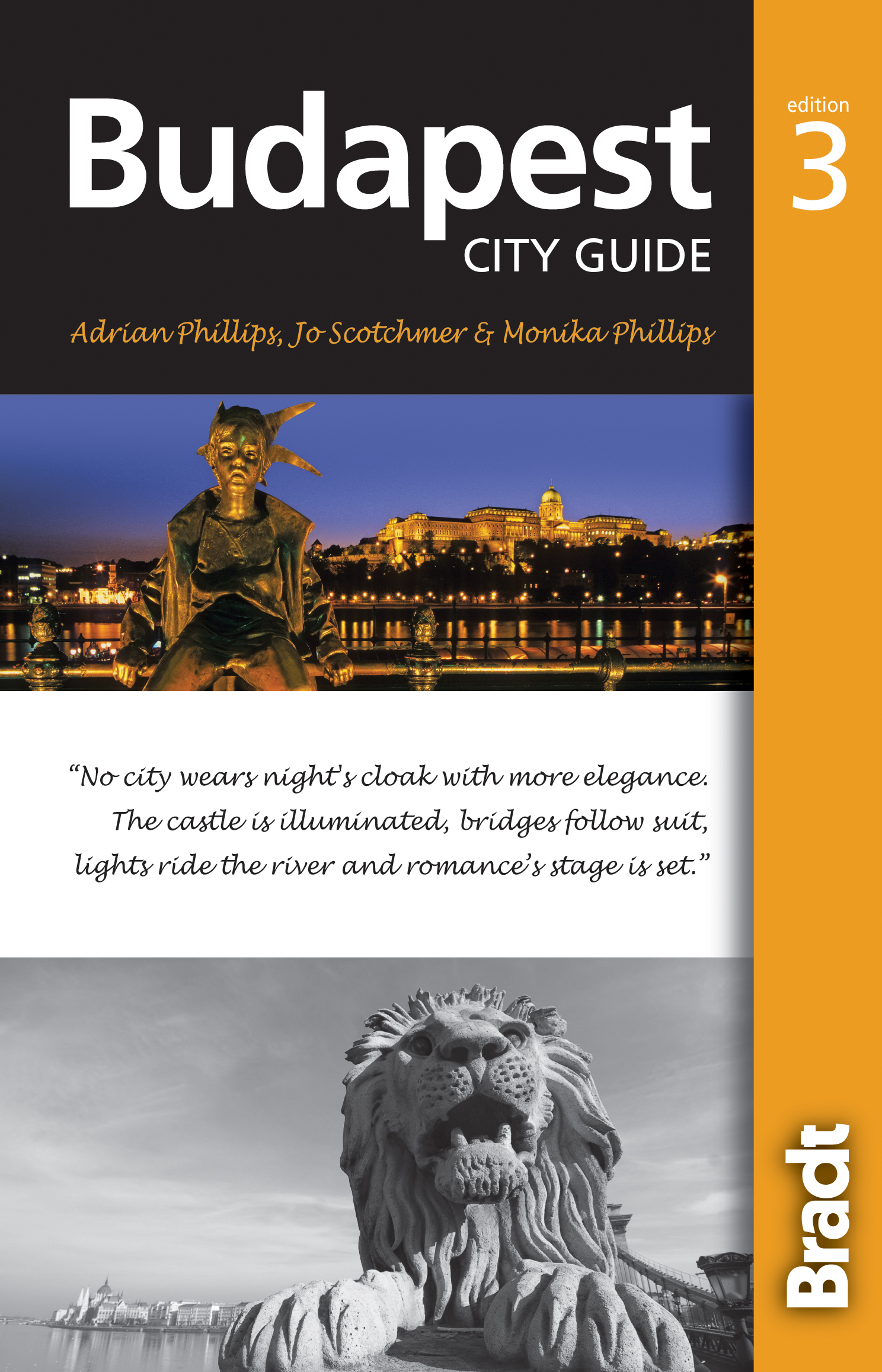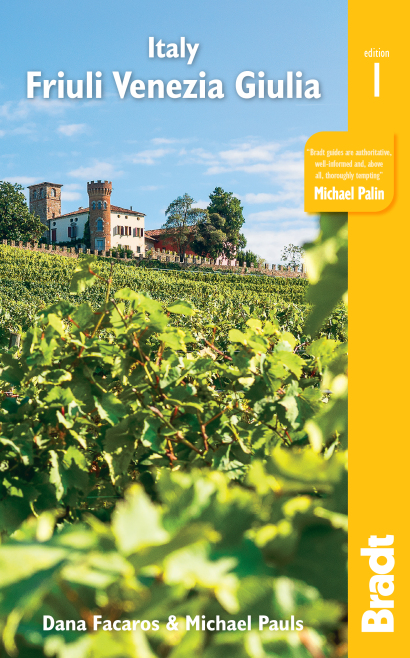Bradt Budapest
City Guide
by Adrian Phillips and Jo ScotchmerBudapest City Guide – Award-winning guide with travel tips on everything from the best cafés and bakeries to bars and nightlife, day trips and historical sites. Also features shopping, accommodation and restaurants, language guide, art and music, museums, Castle Hill, downtown highlights, parliament, Danube cruises, Heroes’ Square and City Park.
Size: 126 X 196 mm
Edition: 3
Number of pages: 336
About this book
Budapest has it all: spectacular architecture, award-winning cultural festivals, Michelin-starred restaurants, historic thermal baths and business-friendly hotels. The authors are winners of the British Guild of Travel Writers Best Guidebook Award and share their enthusiasm for the city in an engaging and witty style. Thoroughly updated, the third edition of Budapest is packed with up-to-the-minute information on hotels, cafés, bars and restaurants, as well as new walks. It provides travellers with all they need on where to stay, eat and drink, and what to see and do.
About the Author
Adrian Phillips is Managing Director at Bradt Travel Guides, and an award-winning travel writer/broadcaster. His Hungarian wife, Monika Phillips, helped to update this third edition. Jo Scotchmer is a public-relations director and has contributed to a number of magazines.
Reviews
‘As informative as ever. Combining an engaging, light-hearted tone with stylish prose and layout, this guide tempts you into digesting large chunks in one sitting. Dare I say it, perfect airport reading.’
Duncan Craig, Deputy Travel Editor, Daily Express
‘An insightful, eminently readable guide that gets the visitor under the skin of this city.’
Kate Simon, Travel Editor, Independent on Sunday
‘Recommended further reading’
The Daily Telegraph
Additional Information
Table of ContentsContents
Introduction XXIII
How to use this book XXIV
Background & practical info
Contexts 1
History 2, Politics 9, Economy 13, People 17, Cultural etiquette 19, Giving
something back 21, Business 22, Religion 24, Culture 24, Holidays,
festivals & events 28, Geography 31, Climate 32
Planning 33
The city: a practical overview 33, When to visit 34, Tour operators
(worldwide) 35, Red tape 40, Hungarian embassies abroad 41, Getting
there & away 41, Health 48, Safety 51, What to take 56, Money 58
Practicalities 59
Banks 59, Exchanging currency 59, Credit cards 60, Media 61,
Communications 62, Embassies (local) 66, Tourist information 67, Local
tours 67, Local travel agents 74, Discount card 74, Food 75, Drink 79,
Coffee & cake 82, Museums & galleries 85, Public toilets 86
Local Transport 87
Public transport 87, Other transport 91
Accommodation, leisure & entertainment
Accommodation 95
Hotels, pensions & hostels 95, $$$$$+ 97, $$$$$ 100, $$$$ 102, $$$ 109,
$$-$ 114 Private apartments 116, Private rooms 118, Camping 118
Bars & Nightclubs 121
Bars & pubs 121, Nightclubs 131, Gay Budapest 135
Entertainment 137
Ticket offices 137, Theatre 139, Music 141, Dance 146, Other 148,
Cinema 148, Casinos 149
Shopping 151
Antiques, art, furniture & jewellery 152, Folk-art centres 156, Food &
drink 157, Markets 158, Newspapers, books & maps 162, Porcelain,
pottery & glass 163, Shopping centres/malls 164, Miscellaneous 165
XX
Baths & Sport 167
Baths 167, Sport 174
Exploring the city
Castle Hill 181
Getting up there 182, The castle complex 183, The old town 186, Major
sights 196, Museums & galleries 200, Restaurants 204, Cafes 206
Gellert Hill, the Taban & surrounds 207
Gellert Hill 207, the Taban 210, The surrounds 211, Museums &
more 212, Restaurants & cafes 214
The Vizivaros, Szell Kalman ter & close by 215
The Vizivaros 215, Szell Kalman ter 219, Museums & more 220,
Restaurants & cafes 221
Obuda, Aquincum & the Romai-part 223
Museums & more 226, Restaurants & cafes 228
The Buda Hills & Beyond 231
The rail trail 233, Normafa Lejto & Janos hegy 234, Other hill
walks 234, Caves 236, Other sites of natural interest 238, Museums &
more 241, Restaurants & cafes 244
The Downtown 247
Belvaros 247, Lipotvaros & beyond 254, Major sights 257, Museums &
more 260, Restaurants 261, Cafes 268, Coffee bars 270
Terezvaros 271
Along Andrassy ut 271, Museums & more 274, Restaurants & cafes 277
Heroes’ Square, City Park & the Sports District 281
Museums & more 284, Restaurants & cafes 288
Erzsebetvaros 291
A walk along Dob utca 292, Museums & more 294, Restaurants &
cafes 296
Jozsefvaros, Ferencvaros & beyond 299
Museums & more 301, Restaurants & cafes 306
The Islands 307
Margaret Island 307, Shipyard (or Obuda) Island 309
Beyond the City 311
Outside Budapest 311, The Danube Bend 312, Lake Balaton 314
XXI
Phrases & further info
Language 315
Pronunciation 315, Words & phrases 316
Further Information 321
Books 321, Guidebooks & maps 322, Websites 323
Index 324
XXII




